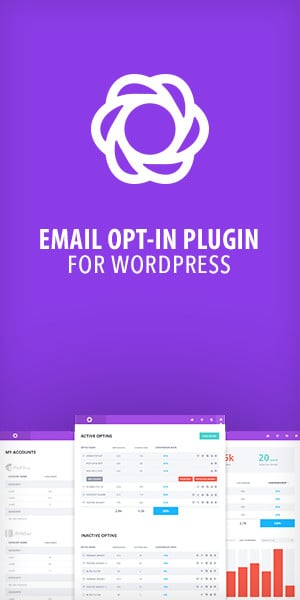Open-source project management software has become increasingly popular for its flexibility, cost-effectiveness, and collaborative potential. However, with this widespread adoption comes the critical need to address security concerns. As you rely on these tools to manage your projects, it’s essential to understand the unique security challenges they present.
Implementing robust security measures in open-source project management tools is crucial to protect sensitive data, maintain user privacy, and ensure the integrity of your projects. This involves keeping dependencies up-to-date, leveraging encryption techniques, and following best practices for secure development. By prioritizing security, you can harness the benefits of open-source solutions while minimizing potential risks.
Transparency plays a key role in enhancing the security of open-source project management software. Cross-team collaboration and community involvement contribute to meeting evolving security standards. As you evaluate different options, consider factors such as regular security updates, data encryption capabilities, and the overall health of the open-source project. These elements will help you make informed decisions and safeguard your project management processes.
Fundamentals of Security in Open-Source Project Management
Security in open-source project management involves understanding the unique aspects of the open-source model, implementing robust vulnerability management practices, and adhering to governance standards. These elements form the foundation for maintaining secure and reliable open-source software.
Open-Source Model and Security Implications
The open-source model offers transparency and collaboration, but it also presents unique security challenges. You gain access to a global pool of contributors, which can lead to rapid innovation and bug fixes. However, this openness also means potential vulnerabilities are publicly visible.
To mitigate risks, you should implement code review processes and use automated security scanning tools. These practices help catch vulnerabilities early in the development cycle.
Consider setting up a bug bounty program to incentivize security researchers to responsibly disclose vulnerabilities. This proactive approach can significantly enhance your project’s security posture.
Vulnerability Management
Effective vulnerability management is crucial for open-source project security. You need to establish a coordinated vulnerability disclosure process to handle reported security issues promptly and responsibly.
Implement a system for tracking and prioritizing vulnerabilities. Use tools like the OpenSSF Scorecard to assess your project’s security health and identify areas for improvement.
Regularly update dependencies to ensure you’re using the latest, most secure versions. Automate this process where possible to reduce the risk of overlooking critical updates.
Educate your team and contributors about common security pitfalls and best practices. This knowledge sharing can prevent many security issues before they occur.
Governance and Standards Compliance
Establishing clear governance structures and adhering to industry standards is essential for maintaining trust in your open-source project. You should define roles and responsibilities for security-related tasks within your project team.
Implement a security policy that outlines your project’s approach to handling vulnerabilities and security incidents. Make this policy easily accessible to all contributors and users.
Consider adopting widely recognized security standards such as the OWASP Top 10 or the CIS Controls. These frameworks provide a solid foundation for securing your project.
Regularly audit your project’s compliance with these standards and make necessary adjustments. This ongoing process ensures your project maintains a strong security posture over time.
Implementing Security Measures
Effective security measures are essential for protecting open-source projects from vulnerabilities and threats. You can enhance your project’s security through code reviews, automated testing, and community collaboration.
Secure Code Reviews
Implement regular code reviews to identify potential security flaws. Establish a process where team members examine each other’s code for vulnerabilities. Use a checklist to ensure common security issues are addressed, such as input validation, authentication, and authorization.
Set up a peer review system where at least two developers must approve changes before merging. This helps catch overlooked vulnerabilities and ensures code quality.
Consider using automated tools to assist in code reviews. These can flag potential security issues for human review, saving time and improving consistency.
Automated Security Testing
Integrate security testing into your continuous integration/continuous deployment (CI/CD) pipeline. This ensures that every code change is automatically scanned for vulnerabilities.
Use static application security testing (SAST) tools to analyze source code for potential security flaws. These tools can detect issues like SQL injection, cross-site scripting, and buffer overflows.
Implement dynamic application security testing (DAST) to identify runtime vulnerabilities. This involves scanning your application while it’s running to find issues that may not be apparent in static code.
Consider using software composition analysis (SCA) tools to check for vulnerabilities in third-party libraries and dependencies.
Community Collaboration and Training
Engage your open-source community in security efforts. Encourage users to report security issues through a responsible disclosure policy.
Create a security mailing list or dedicated channel for discussing and addressing vulnerabilities. This allows for quick communication and coordination when issues arise.
Provide security guidelines and best practices for contributors. This helps ensure that new code additions maintain the project’s security standards.
Offer regular security training sessions for your community. Cover topics like secure coding practices, common vulnerabilities, and threat modeling.
Consider implementing a bug bounty program to incentivize the discovery and responsible reporting of security issues in your project.
Frequently Asked Questions
Open-source project management tools raise important security considerations. Teams must understand key risks and best practices to protect sensitive data and systems.
How do open-source project management tools ensure data confidentiality?
Open-source tools often use encryption to protect data in transit and at rest. Many implement role-based access controls to restrict information access. Two-factor authentication adds an extra layer of security for user accounts.
What are common security challenges in using open-source project management software?
Potential vulnerabilities in open-source code can be exploited if not promptly patched. Misconfiguration of security settings may leave systems exposed. Insufficient access controls could allow unauthorized users to view sensitive project data.
What best practices should be followed to secure an open-source project management environment?
Keep all software updated with the latest security patches. Use strong passwords and enable two-factor authentication. Implement the principle of least privilege for user accounts. Regularly audit system logs for suspicious activity.
How does open-source project management compare to proprietary software in terms of security?
Open-source allows for community review of code, potentially catching vulnerabilities faster. However, proprietary software may have dedicated security teams. Both require proper configuration and maintenance to be secure.
What measures are in place to prevent vulnerabilities in open-source project management systems?
Many projects have bug bounty programs to incentivize vulnerability reporting. Automated scanning tools check code for known security issues. Regular security audits help identify and address potential weaknesses.
How can teams contribute to the security of open-source project management tools they use?
Report any security issues you discover to the project maintainers. Contribute security patches if you have the expertise. Participate in code reviews to help catch potential vulnerabilities before they make it into production.




